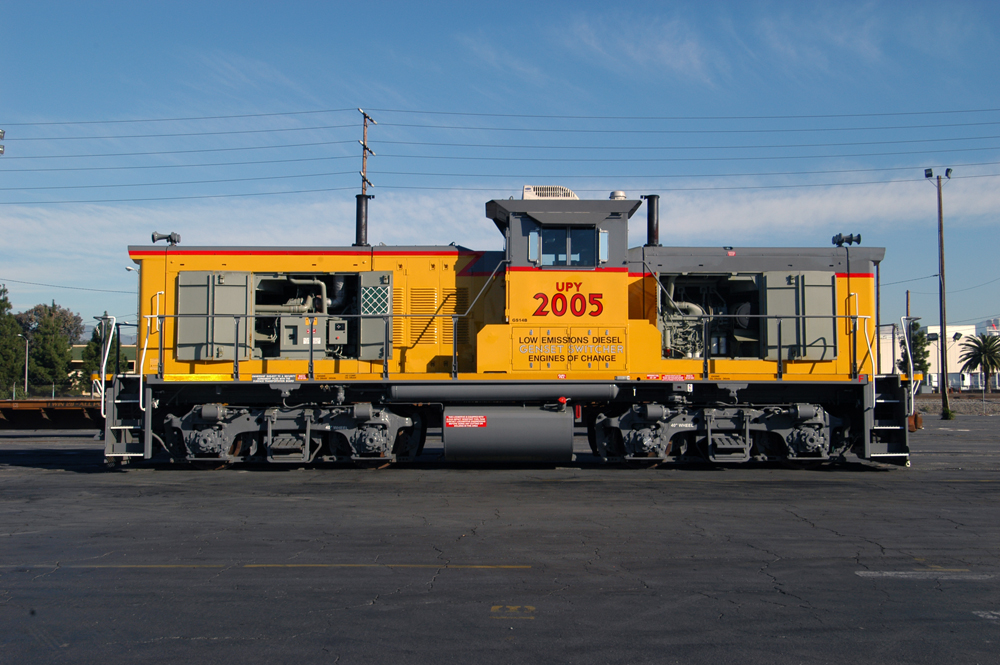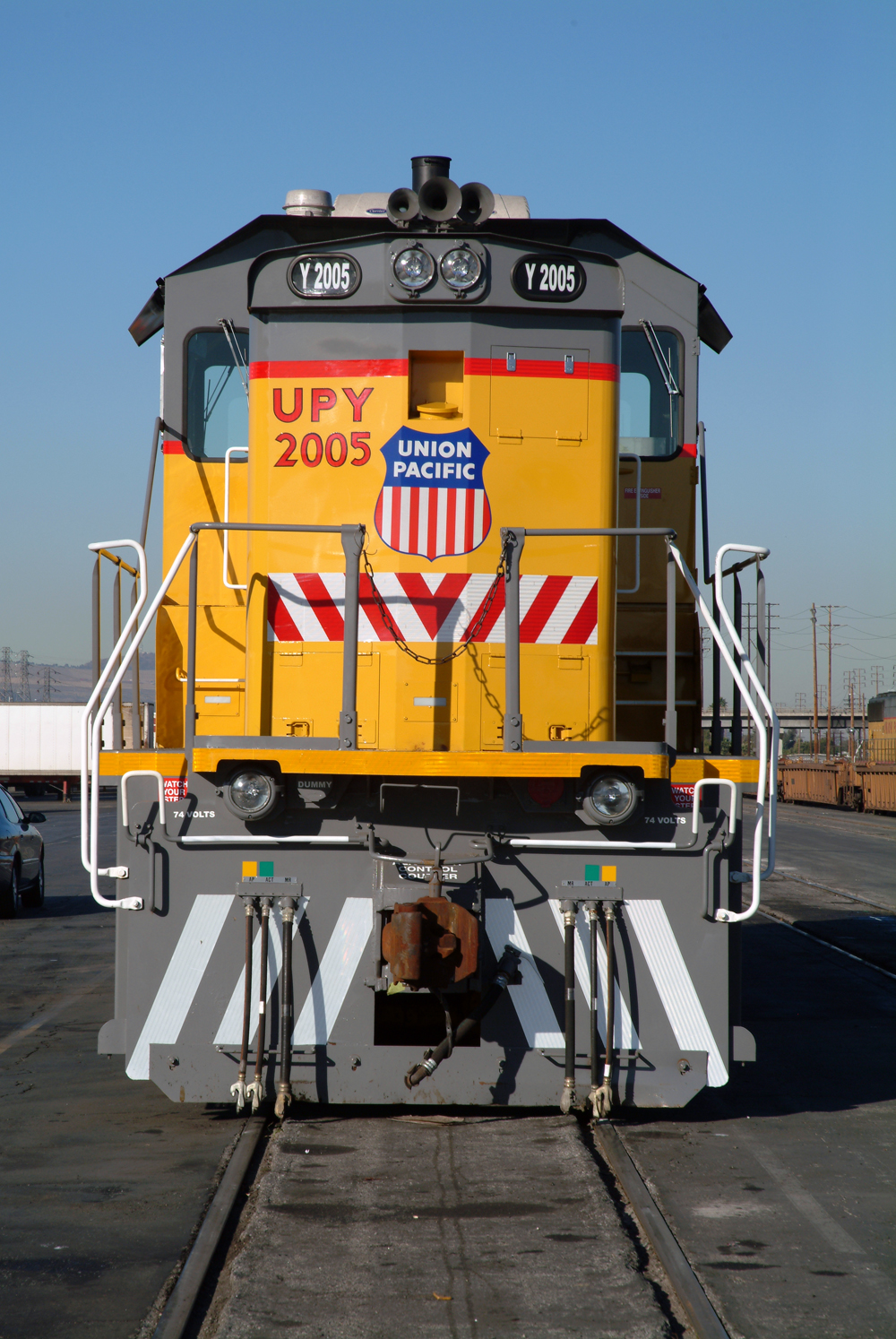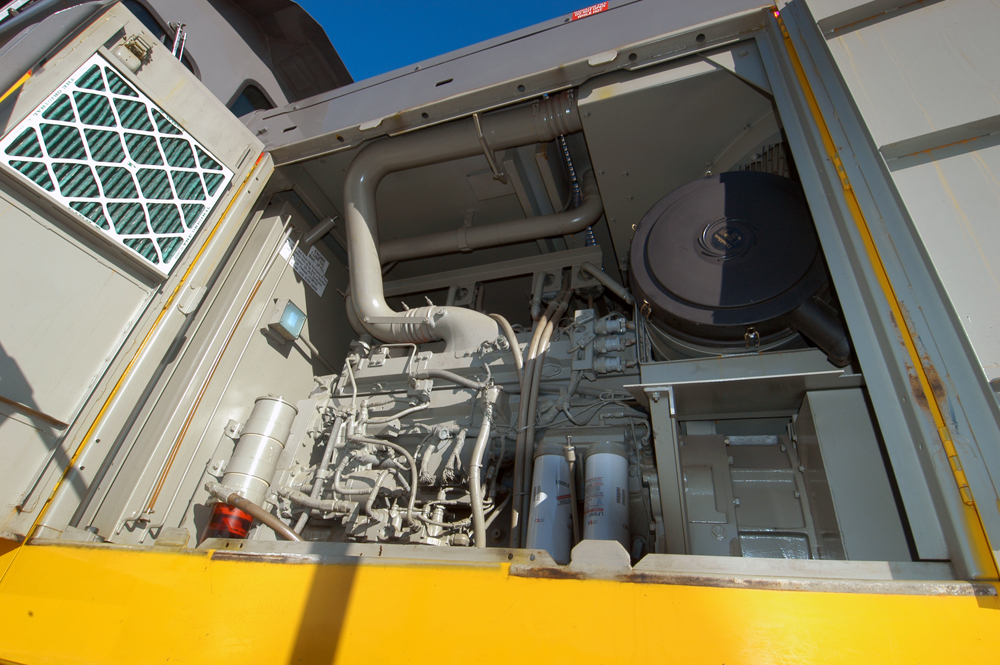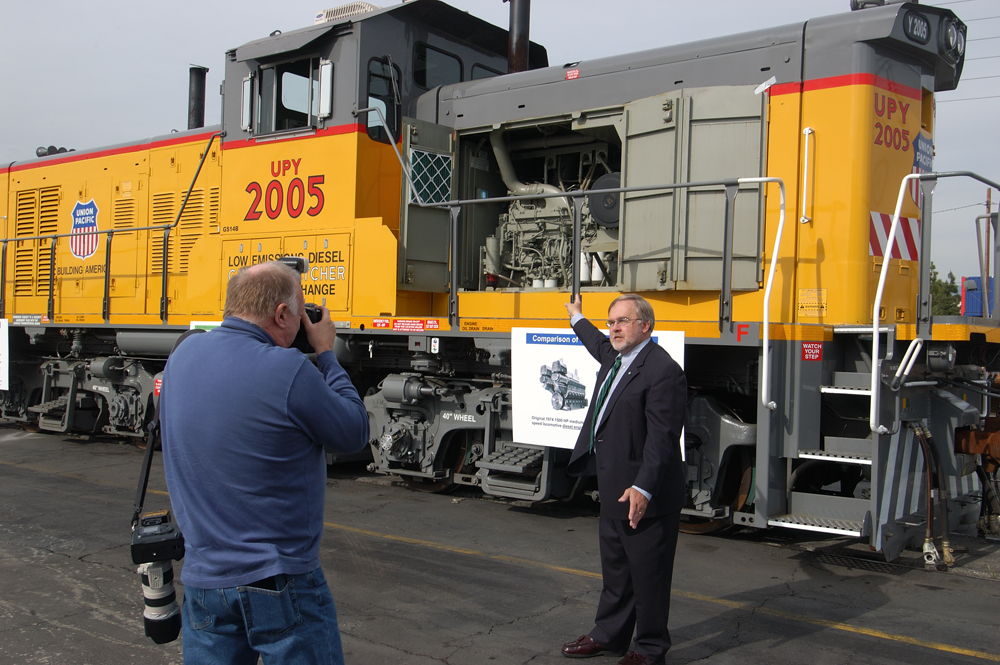Genset locomotive

Everything has an origin. For the modern genset it is Union Pacific UPY 2005.

Coming in a variety of designs and sizes, gensets are designed around the concept of “power on demand.” With few exceptions, humming under their long hoods are multiple diesel truck engines — usually two or three. These engines are wired in such a way that just one can be used if there are a few cars to move, or all can work at once to supply maximum horsepower for a longer cut. The excess engines are turned off when extra power is not needed.
The granddaddy of the modern genset is Union Pacific UPY 2005. It was created by Mike Iden, who during the 2000s was Union Pacific’s general director of car locomotive engineering, with the cooperation of National Railway Equipment Co. of Mount Vernon, Ill.
UPY 2005 debuted at City of Industry, Calif., on Feb. 1, 2006. Contracts were issued shortly afterward to NRE for 60 production gensets for Los Angeles — funded entirely by the railroad — and to Railpower for 98 units for Texas, using partial funding from the Texas Commission for Environmental Quality.
According to the UP website, Iden’s idea was to package the diesel engine, electrical generator, and the cooling system radiator in one compact, easily replaced module called a Generator Set or “Genset.”
The idea is appealing. The locomotives save fuel, wear and tear, noise, and pollution. Should one of the onboard engines fail, the remaining operable ones can continue working. Repairing a genset locomotive has its plusses, as well; each is mounted on a ‘pallet’ that can be quickly removed and an operable engine slid into place.
Of course, when there are advantages there are disadvantages.
By their very design, they are more complex, which means the possibility of more downtime. Initially, they can cost a little more, and crews used to ‘regular’ locomotives need to remember to throttle them a little more carefully. More moving parts means the potential of reducing reliability.
At the start
At the beginning, gensets were quite successful. Orders for the design came from railroads big and small, plus many industrials. The reasoning was twofold: not every industry or industrial park needed to station a traditional large diesel locomotive where a smaller, more efficient unit would suffice; and when idling, the locomotive would pump fewer pollutants into the atmosphere.
Unfortunately, the railroad was so confident about the design, and due to a rush to acquisition, some mechanical engineers felt the vetting period was extremely short. Deliveries began the first part of 2007. That set the stage for reliability problems in early units that soured many railroaders.

Some railroaders liked them, most didn’t. Talk to one engineer and that person would either scream like a banshee on how hated it was, and then talk to someone else and hear nothing but praise.
In 2023, the genset concept is waning. For a variety of reasons, from reliability of the earliest models to increased maintenance expenses, they have been eschewed from many rosters. There are operators, however — mostly short lines and industrials — which find well-kept gensets an asset. Some short lines utilize nothing but gensets.
UPY 2005 was an experimental concept from the very beginning, utilizing active Southern Pacific MP15DC 2690 as a starting point.

It was officially debuted to the press at UP’s City of Commerce yard in Los Angeles and demonstrated to local government officials at the Intermodal Transfer Container Facility in Long Beach. Except for a cold weather stint in Chicago, the unit stayed predominately in Southern California, shuffling cars to and from the ICTF and the ports of Los Angeles and Long Beach, usually sandwiched in with other, later model, gensets.
Although UPY 2005 is off the roster today, it’s still intact, hopefully to be preserved and ultimately displayed to the public.














Are any Gensets being built today? Or is the number capped at those built in the production to date?
Any success today on electric switchers? Lots of space for batteries but lots of power needed for overnight recharging.